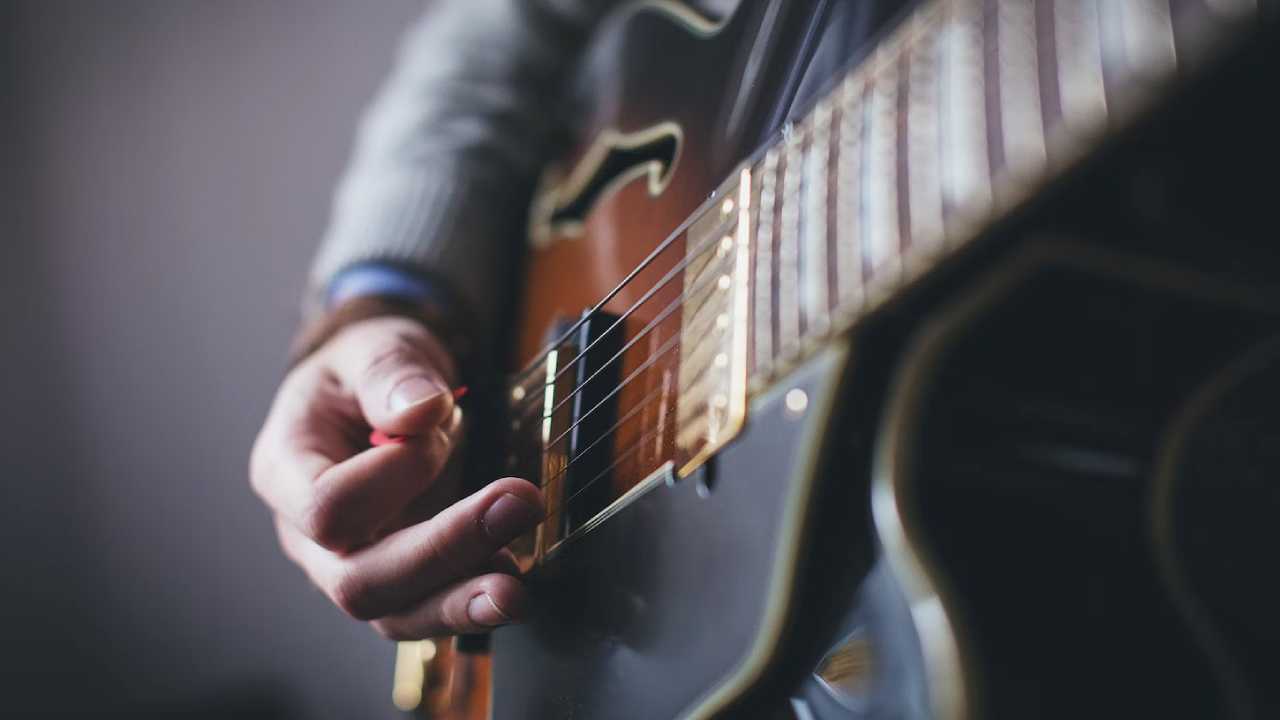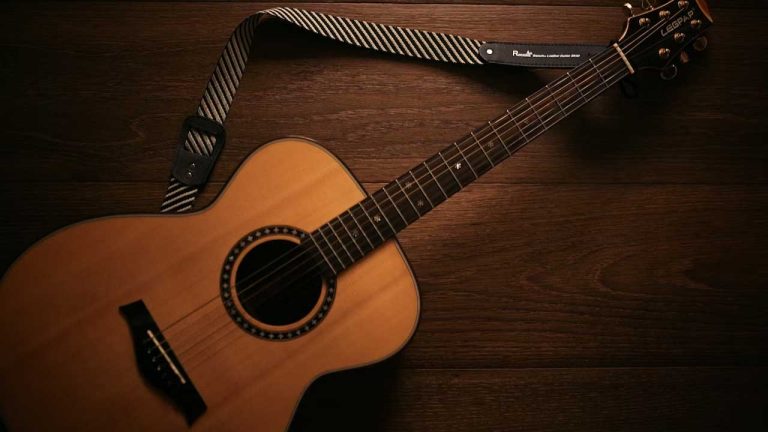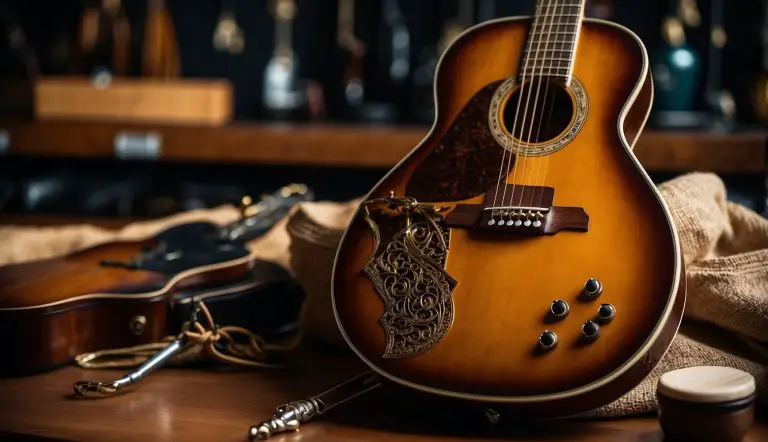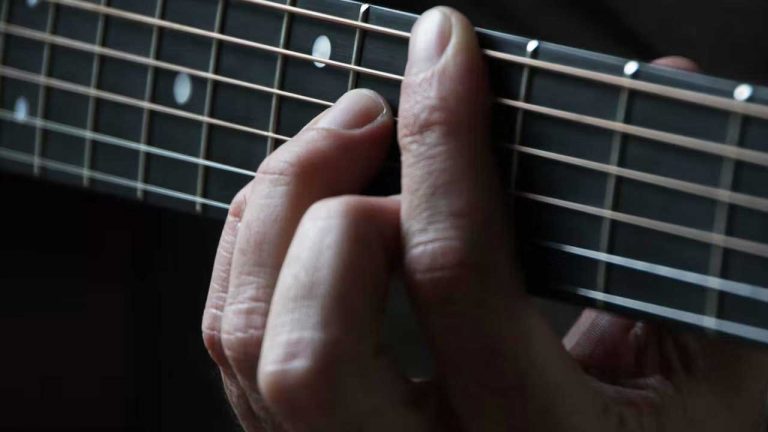The Fast Guitar Players: Unravelling the Speediest Strummers!
Folkstrings.com is reader-supported. When you buy through links on our site, we may earn a small commission.
When you think about fast guitar players, a sense of awe and fascination likely fills your mind. These talented musicians blend technical prowess with blistering speed, redefining what’s possible on the guitar and setting new standards for players around the world. Their jaw-dropping skills can be found across a wide range of genres, from rock and metal to jazz and blues.
As you delve into the realm of fast guitar playing, you’ll undoubtedly become acquainted with legendary names like Les Paul, Paul Gilbert, Johnny Winter, Johnny Hiland, Paco De Lucia, and Al Di Meola.
These trailblazers have influenced guitarists for generations, inspiring others to push the boundaries of speed and technique.
In exploring the world’s fastest guitarists, you may even come across players like
Michael Angelo Batio and Sergiy Putyatov who have made history with their impressive accomplishments.
Bear in mind that different guitarists have their own unique styles and approaches, making it difficult to compare them directly.
Appreciate the diverse range of talent and enjoy the sheer exhilaration of witnessing these virtuosos in action.
In This Article…
The Phenomenon of Fast Guitar Playing
Have you ever been captivated by a guitarist’s ability to play thrilling solos and lightning-fast licks? The phenomenon of fast guitar playing has long been a defining factor in various music genres such as rock, metal, and jazz. As a guitar enthusiast, you might have come across remarkable guitarists who showcase exceptional speed and technique.
For instance, Michael Angelo Batio, whose track “The Finish Line” demonstrates astonishing dexterity and speed, is a testament to the possibilities of fast guitar playing. Other notable guitarists also include Les Paul, Paul Gilbert, Johnny Winter and Johnny Hiland, all of whom have left their mark on the music industry with their fleet fingers.
Becoming a fast guitar player requires a combination of talent, dedication, and practice. It’s not just about breaking speed limits, but also mastering the nuances and intricacies of playing your instrument.
To help you out, there are techniques such as “chunking,” which involves breaking down complex riffs into smaller, more manageable segments, eventually allowing you to play at faster tempos without losing control or accuracy.
Many fast guitarists gain inspiration from various legends, while also adding their own distinct flair to the mix. In turn, these players often inspire a new generation of up-and-coming guitarists looking to emulate their speed and prowess.
So, grab your guitar, keep practising, and see where your musical journey takes you. Remember, guitar mastery isn’t just about speed. Finding your own voice and style is just as important, if not more. And who knows, one day your name could be on the list of the fastest guitarists in the world.
Pioneers of Speed Guitar Playing
In this section, we’ll explore two pioneers of speed guitar playing who have left an indelible mark on the guitar world. Their extraordinary skills and techniques have inspired countless musicians around the globe.
Paul Gilbert
You’re probably familiar with Paul Gilbert for his work with the band Mr. Big and as a solo artist. Known for his incredible speed and precision, he initially gained recognition in the 80s as a member of Racer X. What sets Gilbert apart from other guitarists is not just his speed, but also his ability to play with melodic sophistication. Some of his best-known tracks include “Technical Difficulties” and “Scarified.” Be sure to check out some of his work if you want to experience a master at the top of his game.
Michael Angelo Batio
Michael Angelo Batio is another guitarist who has wowed audiences with his blazing speed and jaw-dropping techniques. As a founder of the metal band Nitro, Batio’s incredible skills were on full display, especially in tracks like “Freight Train.” One of his most known signature techniques is his use of a double-neck guitar, enabling him to play at astonishing speeds. Michael’s instructional videos have also helped countless guitarists develop their own skills and shred up the fretboard.
So there you have it – a brief dive into the world of two pioneers of speed guitar. These musicians rightfully deserve their place in the pantheon of guitar gods for their precision, technique, and lasting influence within the music world. Keep exploring their music and let it inspire your own journey on the guitar.
Key Techniques for Speed Guitar Playing
In this section, we’ll explore some key techniques that can help you play the guitar at quicker tempos with precision and control. Remember, practice makes perfect, and as you gain experience, these techniques will become second nature.
Alternate Picking
One of the cornerstones of speed guitar playing, alternate picking involves using your picking hand to alternate between downstrokes and upstrokes on each note. This technique allows for a smooth and efficient picking motion, which translates to increased speed. When practising, start slow and gradually increase the tempo to build endurance and accuracy. Some tips to keep in mind:
- Keep the picking motion small and controlled
- Maintain consistent down-up-down-up movements
- Pay attention to your wrist and ensure it remains relaxed
Sweep Picking
Sweep picking is a technique that enables you to play arpeggios quickly by sweeping the pick across multiple strings in one fluid motion. It requires precise fretting hand movements to match each picked note. Here are a few pointers to help you master sweep picking:
- Focus on the synchronization between your picking and fretting hands
- Start with simple shapes and progress towards more complex patterns
- Practise muting the strings with your fretting hand to avoid unwanted noise
Economy Picking
Economy picking is a hybrid between alternate picking and sweep picking, allowing for even greater efficiency and speed. Instead of strictly alternating between downstrokes and upstrokes, you’ll utilize your pick’s natural momentum to minimize wasted motion. Here are some tips to help you get the hang of economy picking:
- Pay close attention to your picking direction; follow the path of least resistance
- Make sure your hands are in sync
- Take note of your attack’s constant and fluid motion to maintain a clean, uninterrupted sound
Remember, approaching these techniques with dedication and a casual, patient attitude will help you develop a solid foundation for lightning-fast guitar playing. Best of luck!
The Impact of Fast Guitar Playing on Music Genres
In this section, we’ll explore how fast guitar playing has influenced various music genres, specifically focusing on heavy metal, shred, and jazz-fusion. As you read on, you’ll discover how these genres have been shaped by lightning-fast guitar techniques and virtuosic performances.
Heavy Metal
Heavy metal, as a genre, is synonymous with powerful, aggressive guitar work. Fast-paced riffs and blistering solos are essential to the heavy metal sound, adding intensity and energy to the music. Pioneering guitarists such as Tony Iommi, Ritchie Blackmore, and Eddie Van Halen have inspired generations of musicians to pick up their guitars and play with speed and precision. As you listen to metal bands like Iron Maiden and Metallica, you’ll notice the influence of these earlier guitar heroes on their playing styles and techniques.
Shred
Shred guitar is a subgenre that’s all about technical prowess and mind-blowing speed. Think of guitarists like Yngwie Malmsteen and Paul Gilbert, who have raised the bar with their jaw-dropping solos and blistering fretwork. In shred music, you’ll hear rapid-fire notes, sweep-picking arpeggios, and tapping techniques, all executed at breakneck speeds. As a fan, you might find yourself constantly amazed by the sheer skill and proficiency displayed by these virtuosos of the guitar.
Jazz-Fusion
Jazz-fusion is another genre that has been profoundly influenced by fast guitar playing. Combining jazz harmony and improvisation with elements of rock, funk, and R&B, jazz-fusion guitarists like John McLaughlin, Al Di Meola, and Allan Holdsworth have pushed the boundaries of what’s possible on the instrument. You’ll find that, in this genre, impressive technical skills are often melded with a deep understanding of music theory and an adventurous musical spirit. So, when you listen to jazz-fusion tracks, prepare to be transported to new sonic landscapes, driven by virtuosic guitar performances.
Now that you’ve delved into the impact of fast guitar playing on these music genres, take a moment to appreciate the incredible talent and dedication of the musicians who have made it all possible. And who knows, maybe you’ll be inspired to pick up a guitar yourself and start exploring the world of fast-paced guitar playing.
Critics and Controversies of Fast Guitar Playing
You may have noticed that fast guitar playing often generates a bit of debate in the music world. Some feel that speed is an essential skill for guitar players, while others argue that technique and musicality should take precedence.
Firstly, there’s the age-old debate on whether speed equals musicality. Some critics argue that playing guitar at lightning-fast speeds can detract from the emotional depth of a performance. They believe that by focusing on shredding the fretboard, guitarists may neglect other important aspects of playing, such as phrasing, dynamics, and melodic content.
However, it’s worth considering that many fast guitarists are also highly skilled in other aspects of playing. For example, artists like Paul Gilbert and Joe Satriani have been praised for their ability to blend speed with emotive playing. So, while speed may not equal musicality for every guitarist, it certainly doesn’t hinder it for many others.
Another point of contention is the idea that fast playing is a ‘gimmick’ or a way to show off. Critics argue that some guitarists use speed as a means to impress their audience, rather than as an artistic choice. They feel that this approach may devalue the guitar as an instrument and overlook the importance of originality and creativity in music.
On the flip side, proponents of fast guitar playing argue that speed is just another tool in a guitarist’s toolbox. They believe that, when used effectively, it can add excitement and intensity to a performance. Just as other techniques, like tapping or slide guitar, can enhance a piece, so can speed.
Lastly, there’s the debate over accessibility. As guitar playing becomes ever more technical, some fans feel left behind, unable to emulate their heroes’ blistering solos. This can create a divide between those who appreciate a more straightforward, melody-driven approach to guitar and those who enjoy the complex, virtuosic stylings of speedy players.
In conclusion, while there are certainly valid criticisms of fast guitar playing, it’s important to remember that when used effectively, speed can be an exciting and powerful addition to a guitarist’s repertoire. The key lies in finding the right balance between technical fireworks and genuine musical expression.
The Future of Speed Guitar Playing
In the world of guitar playing, speed has always been a subject of fascination. With the rapid progression of technology and ever-evolving techniques, there’s no doubt that the future of speed guitar playing holds some exciting surprises for you.
As a budding guitarist, you might notice how the internet has made it easier for guitarists to share their skills, techniques, and tutorials with people like yourself. This accessibility means you’ll be able to learn from the best and improve your speed as you progress on your musical journey.
It’s crucial to remember that speed isn’t everything. As you improve your technique and play faster, don’t forget to focus on your ability to convey emotions and bring life to your music. In the future, we’ll likely see even more of an emphasis on balancing speed with a deep connection to the music, bringing the listener’s experience to a whole new level.
It isn’t just about how fast you can play but also about finding the perfect balance between technique and expressing your passion for music. Always stay curious and open to new ideas, and remember to have fun in your pursuit of speed.
Alongside the increasing sophistication of playing styles, technology opens up thrilling possibilities, such as virtual reality guitar lessons and advanced tools that help you build speed in a more streamlined way. Imagine strumming your guitar while immersed in a virtual jam session with your favourite guitarists or taking a masterclass from renowned speed demons of the guitar world – the possibilities are endless!
Frequently Asked Questions
Who holds the world record for fastest guitar playing?
The current Guinness World Record for the fastest guitar playing is held by Dr. V. A. ‘Speedy’ Shred, who played Nikolai Rimsky-Korsakov’s “Flight of the Bumblebee” at an astonishing 999 BPM (beats per minute) in 2020.
Remember, there are many guitarists out there who can play at incredible speeds, so this record may always be in hot contention!
Which shredders are known for their impressive speeds on guitar?
Some well-known shredders known for their exceptional speed and technique include Yngwie Malmsteen, Eddie Van Halen, Steve Vai, and John Petrucci.
These musicians are admired for their ability to play intricate and fast-paced solos, elevating the guitar as a powerful and expressive instrument.
What is the fastest guitar solo ever played?
The fastest guitar solo ever played is a topic of debate in the world of guitar enthusiasts. One contender is the solo from “Glasgow Kiss” by John Petrucci, clocking in at 200 BPM.
However, there are a lot of other mind-blowingly fast solos out there. The true “fastest” solo might vary depending on personal opinion.
Which band includes the quickest guitarists?
There are several bands that showcase incredibly fast guitarists. One example is the band DragonForce, known for their guitarist Herman Li, who is revered for his lightning quick playing style.
There’s also the band Dream Theatre whose guitarist, John Petrucci, is known for his exceptional speed and skills. These examples only scratch the surface and can change vastly depending on the genre and time period.
Who are some notable fast acoustic guitarists?
Fast acoustic guitarists demonstrate exceptional finger picking and strumming techniques.
Some of the noteworthy fast acoustic guitar players include Tommy Emmanuel, Al Di Meola, and Paco de Lucía.
Their speed, technique, and flair while playing acoustic guitars have inspired countless musicians and left audiences in awe.
Is Yngwie Malmsteen known as one of the quickest guitar players?
Indeed! Yngwie Malmsteen is well-regarded as one of the fastest guitar players of all time. His virtuosic technique, neo-classical style, and incredible speed have influenced many guitarists over the years.
Malmsteen’s distinctive sound and precise playing make him a stand-out figure in the world of fast guitar playing.
Author Profile
-
Daniel Johnstone is an English writer with a love for stringed instruments from around the world.
He shares his love for these instruments through his writing for folkstrings.com, a website dedicated to all things related to folk string music.
Daniel's passion for music started at a young age, and he has since become an accomplished musician, playing guitar, cavaco, and recently, the harp.
His dedication to learning and sharing his knowledge of stringed instruments is evident in his insightful and engaging blog posts. Whether you're a seasoned musician or a beginner, Daniel's writing is sure to inspire and entertain you.
When he's not playing music or writing, you can find Daniel exploring new instruments and seeking out new sounds to share with his readers.
Latest entries
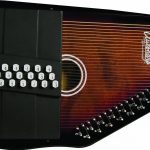 AutoharpApril 4, 2024What Is the Autoharp Made Of: Exploring Its Materials and Craftsmanship
AutoharpApril 4, 2024What Is the Autoharp Made Of: Exploring Its Materials and Craftsmanship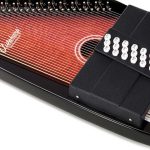 AutoharpApril 4, 2024Is Autoharp Easy to Play? Unveiling the Truth for Beginners
AutoharpApril 4, 2024Is Autoharp Easy to Play? Unveiling the Truth for Beginners AutoharpApril 4, 2024What Is an Autoharp Worth? Your Guide to Pricing and Value
AutoharpApril 4, 2024What Is an Autoharp Worth? Your Guide to Pricing and Value AutoharpApril 4, 2024Are Autoharp and Zither the Same Thing? Unraveling String Instrument Myths
AutoharpApril 4, 2024Are Autoharp and Zither the Same Thing? Unraveling String Instrument Myths
Affiliates:
This post may contain affiliate links that at no additional cost to you, the site may earn a small commission. We only recommend products we would use ourselves and all opinions expressed on this site are our own.
Accuracy Advice:
While we strive to provide up-to-date and accurate information, the content in this article may not reflect the most current research or medical guidelines. We encourage readers to do further research and consult with professionals for more personalized advice.
Our Recommendations:
The products and services mentioned in any of our articles are recommended based on our independent research and personal experience. We are not sponsored by any company. We aim to suggest products and services we believe are of high quality and could be beneficial to our readers.

